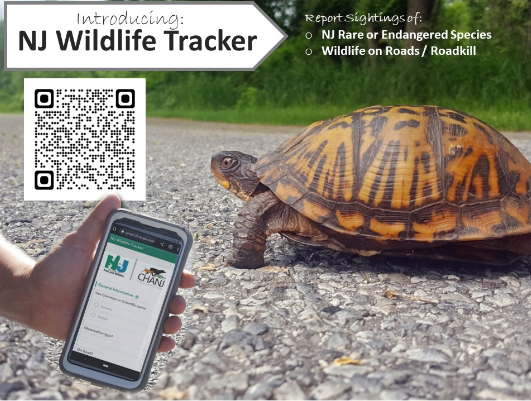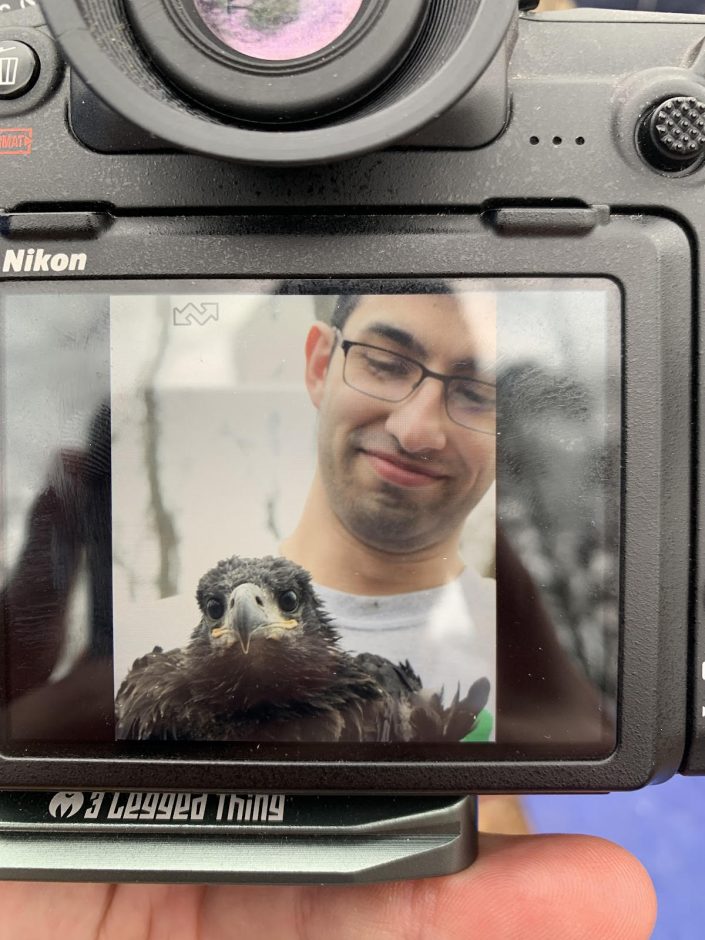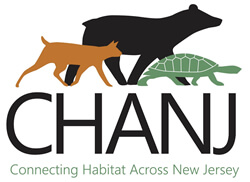Expanding Conservation with Biotics
by Robert Criollo and Daniel Turcios, GIS Program Managers
In the world of Biotics, it all starts with one upload. An observer can come across the species wandering the forests of New Jersey and snap a photo of it. From there, they upload it to the New Jersey Wildlife Tracker.

A few tracked species are: Eastern Box Turtles, Bobcats, Peregrine Falcons, Red Knots, and Pine Barrens Treefrog.
For a full list of tracked species, click here: Tracked Species List

As the species record moves through the Wildlife Tracker, it is reviewed by state biologists to make sure of its validity. From here, this record is ready to be moved into the Biotics database. The Biotics database is an integrated-web platform created and used for spatial data management. All the compiled records that state biologists and the public submit that pass through the quality checking process ends up here.
The Biotics Database has a wide variety of uses such as Biodiversity conservation, data-driven decisions, and uses in monitoring and assessment.
- With each record, we are able to keep more detailed information regarding each record uploaded for which it can help establish a visual on the species, ecosystem, and habitat in that area which aids in conservation.
- By having standardized protocols to manage data, it can help Biologists and policy-planners make more effective conservation strategies and decisions for New Jersey habitat.
- As the CWF staff constantly monitor the data, it can aid in keeping track of state endangered and at-risk species like the bald eagle. With the help of diligent staff, the bald eagle population has recovered drastically and there are now over 200 bald eagles spread across New Jersey.

This data serves 2 projects: The Landscape Project and Connecting Habitats Across New Jersey(CHANJ).
- To read more about the Landscape Project, click here: https://dep.nj.gov/njfw/conservation/new-jerseys-landscape-project/
- To read more about Connecting Habitat Across New Jersey, click here: https://dep.nj.gov/njfw/conservation/connecting-habitat-across-new-jersey-chanj/
Discover more from Conserve Wildlife Foundation of NJ
Subscribe to get the latest posts sent to your email.